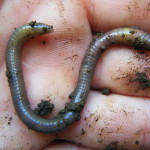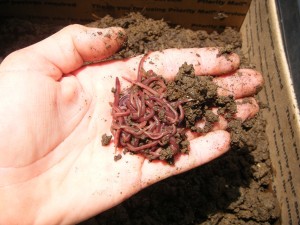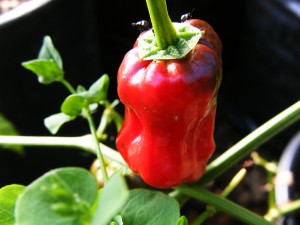Warning: Illegal string offset 'filter' in /var/www/wp-includes/taxonomy.php on line 1718
Importance of Earthworms in Hawaii
Wait! Is there that many earthworms living in my soil?
L.Rieber, Staff Writer
Earthworms are responsible for making some of the best organic, all natural source of nutrients that can be found in the soil. This source is by far one of the best types of nutrients that a plant can take up and it is created by recycling of organic material (also known as green waste or yard clippings). For someone who wants to grow food naturally on a small or large scale, this is some great news: “free nutrients.”
Another way of looking at it is that you don’t have to fertilize an old forest. Every plant needs to take up nutrients through its roots, and in a forest, something is supplying them with exactly what they need everyday of the year. For most places, earthworms and other microbes are responsible for supplying all the tree’s nutrients to it, near its roots. How does a creature that seems so fragile and small capable of doing so much work?

When you think of earthworms, most people think of an individual worm.
People often ask themselves, “What can that thing do for me? It’s slimy, small and lives in the “dirty” ground.” But in reality, in the growing of our food, earthworms are very significant and important. Besides producing free nutrients for you and your plants, earthworms also help with drainage in clay soils, the production of soil in rocky landscapes, as well as make minerals available in the soil.
The healthier the soil, the more earthworms there are. Earthworms will multiply and reproduce according to the amount of food that is available for them. Earthworms eat any and all organic material that is decomposing. They will not eat healthy, living plant tissue. They will eat up to their own weight everyday of old roots, dead leaves, twigs, dead insects, cardboard, eggshells, newspaper, and fruits and vegetables to name a few.
When really thinking and considering earthworms in the soil, it is best to think of them as a whole. For example, in an acre of healthy soil you can find over a million earthworms throughout the top six inches of the soil. A million earthworms is roughly 2000 pounds of worms. 2000 pounds! If they eat on a low scale, half of their body weight everyday- that gives you, the owner of that acre of land, about 1000 pounds of nutrients a day spread over the surface.

An acre is a little smaller than a US football field. 
- photo courtesy of: antpkr freedigitalphotos.net
The best part of it all is that the earthworms in that acre of soil are not one single animal, like a cow or horse, but a million of individual, nutrient- producing creatures, spread all over the surface of the soil. So the next time you look at a forest or organic farm, take a moment to think about the abundance of earthworms doing work down in the soil, everyday of their lives, to produce enough nutrients for that plant to survive without any synthetic or man made nutrients.
References:
Barrett, T.J. 1959 “Harnessing the Earthworm”. Faber and Faber Limited, London
Herms, Daniel A, Lloyd John E, and Stinner, Benjamin R. 1999. “Effects of Organic Mulches and Fertilization on Soil Microbial Activity, Nutrient Availability, and Growth of River Birch”. Department of Entomology, The Ohio State University, Ohio Agricultural Research and Development Center. Wooster, Ohio
Hoorman, James J, and Islam, Rafiq. 2010. “Understanding Soil Microbes and Nutrient Reclining”. Ohio State University, Extension
Gladstone, Nancy. 1997. “Action Sheet 34: Mulching, So what is mulching?” Outreach TVE Soils Education Pack:Soil Improvement in the Tropics article on Mulching.
Lownfels, Jeff & Lewis, Wayne. 2010. “Teaming with Microbes, The Organic Gardener’s Guide to the Soil Food Web”. Timber Press: Portland, Oregon.
Nancarrow, Loren & Taylor, Janet H. 1998. “The Worm book, The complete guide to Gardening and Composting with Worms”. The Speed Press, Berkley.
Martin, Deborah L, Gershuny, Grace “The Rodale Book of Composting” 1992, Published by Rodale Books
Minnich, Jerry. 1977. “The Earthworm Book, How to Raise and Use Earthworms for your Farm and Garden” Rodale Press, Emmaus, PA
Stewart Amy, 2004. “The Earth Moved, On the Remarkable Achievements of Earthworms”. Algonquin Books of Chapel Hill: North Carolina.
No Spray

